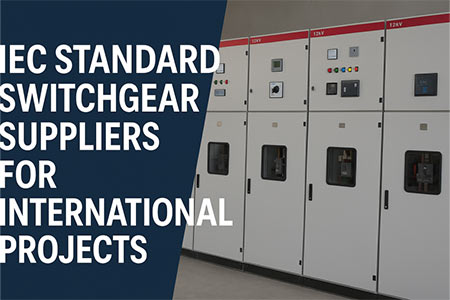Switchgear is the core component of modern electrical distribution systems, ensuring the reliable control, protection, and isolation of power circuits. In recent years, the global demand for IEC standard switchgear has significantly increased, especially from international infrastructure projects that prioritize safety, quality, and interoperability.

IEC (International Electrotechnical Commission) standards define the global benchmarks for electrical performance, insulation coordination, and fault interruption capabilities. Switchgear built to IEC standards is widely recognized for its compatibility across multiple voltage classes, typically ranging from 3.6kV up to 40.5kV for medium-voltage applications. This compatibility allows manufacturers and utilities from different regions to integrate equipment seamlessly, reducing maintenance and procurement complexity.
Export-oriented switchgear suppliers are now focusing on customized configurations that align with various regional requirements, including tropical climate resistance, modular expansion, and smart monitoring functions for automation systems. The global export market shows high activity in Asia, the Middle East, and Africa, where new industrial zones and renewable energy projects require durable and standardized switchgear solutions.
When selecting IEC-standard switchgear for international projects, buyers should pay attention to insulation type (air, gas, or solid), rated short-circuit current, operating mechanism, and after-sales technical support. A reliable supplier should provide complete documentation, such as type-test certificates, IEC compliance reports, and 3D model drawings to support engineering design.
Putai provides a range of switchgear solutions compliant with IEC 62271 standards, suitable for distribution networks, substations, and industrial facilities. With practical design and proven performance, Putai’s switchgear systems are well-suited for global applications and long-term operation.